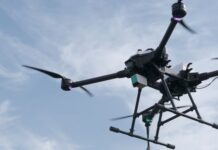yuzablon@gmail.com
With the glaring effects of climate change in agriculture; erratic weather, pests and diseases outbreak, soil degradation and environmental disasters such as fire and floods, the need for data analytics for sustainable farming, early preparedness and yields prediction has never been this inevitable.
Imagine this, you have a farm located far away and out of reach or you have farmlands which are pretty extensive and you want to keep in touch with what is going on in and around them every time. Won’t this seem quiet impossible yet with the current agritech space high-resolution satellite imagery and artificial intelligence (AI) this is achievable.
Simply put, “Modern farmers require data, and they want it now,” said Yevhenii Marchenko, Senior Account Executive at EOS Data Analytics, global provider of AI-powered satellite imagery analytics.
He adds that this provides growers with all the information they need at the palm of their hands without having to leave the comfort of their homes or offices.
The company offers a wide range of products including EOSDA LandViewer which uses medium and high-resolution imagery to monitor agricultural lands and detect changes remotely in large-scale areas something that is not easily achievable by traditional methods.
This approach, according to Marchenko, is effective in several ways: it enables faster monitoring of larger areas compared to traditional scouting, provides a comprehensive field or cluster-wide perspective instead of focusing on single points, and supports the application of various analytics, such as the Normalized Difference Vegetation Index (NDVI) and the Normalized Difference Moisture Index (NDMI).
“Most importantly, satellite imagery offers a historical perspective, allowing for retrospective analysis during the offseason. This provides a much broader and deeper understanding of crops while ensuring a level of accuracy that only machines can achieve,” he said.
Role of AI in analyzing satellite data
EOS Data Analytics operates the EOS SAT-1, a small optical satellite designed for applications such as enhancing agricultural practices, monitoring forests and the environment, and supporting disaster management through custom projects.
In this, the company’s science team leverages machine learning and AI to analyze patterns, process datasets, and develop reusable prototypes. These models, built on satellite data and machine learning, can be tailored to different projects based on geographic and individual indicators.
“One example is our proof-of-concept project calculating cotton yields in Texas, USA,” said Marchenko. “We refined our existing model specifically for cotton, and it can now be adapted for use in other regions as needed.”
This has a huge contribution to precision farming where satellite imagery analytics provides data for effective decision-making, allowing the detection of stressed areas in the fields and calculating the corrections needed to be made before the damage becomes irreversible.
“In this, users are empowered to make more informed decisions in crop nutrition and protection management, moving away from intuition-based decision-making,” he said.
Adopting sustainable farming practices
According to EOS Data Analytics’ Senior Account Executive and seasoned business developer with six years of experience, since satellite images provide detailed insights into vegetation health, soil moisture, and weather conditions, they enable more sustainable and efficient use of resources.
For instance, in case a farmer knows it will likely rain tomorrow, they can skip applying fertilizer or watering the field today.
“Our Variable Rate Application (VRA) maps help reduce the use of mineral fertilizers, saving costs and protecting the environment.”
Also, if a disease is detected in a specific area, the farmer can target that spot with pesticides, avoiding unnecessary application across the entire field and minimizing damage to other unaffected plants thus supports farmers in accessing crop health and predicting yields
Pests and diseases detection
The firm offers a “Disease risk” add-on that provides a 14-day disease forecast. With this, dying plants due to disease or pests are easy to detect with satellite imagery, using NDVI to measure plant greenness.
“If plants are not green when they should be,” explains Marchenko, “It signals a problem with precise location data so that farmers can quickly inspect affected areas.”
EOSDA Crop Monitoring provides soil moisture analytics and soil organic carbon modeling. The moisture tool measures soil moisture at various depths, with historical data from 2002, offering results within six hours, unaffected by clouds or vegetation.
The organic carbon model maps soil health and CO2 storage with 90% accuracy using the RothC model.
Yields prediction
Satellite technology (sattech), is also highly effective for yield prediction, outperforming traditional manual methods.
It provides statistical and biophysical models that rely on key data, including target crop types, yield statistics from the past 3–5 years, crop calendars, agro-management practices, soil maps and composition data, and local weather information for yields predictions.
“Much of this information is more easily and efficiently obtained via satellites than through local libraries or farmer databases,” said Marchenko adding that precision is crucial in crop management, and sattech ensures better-informed decisions for improved yields.
Accessibility
EOSDA aims to make its services accessible to all farmers by partnering with clients to provide the best possible service, while working towards the broader goal of promoting sustainable and climate-smart agricultural practices worldwide.
“We want to do this by listening to our clients and adjusting our models based on their feedback and fine-tuning our tools to better address the challenges they face,” said Marchenko.








